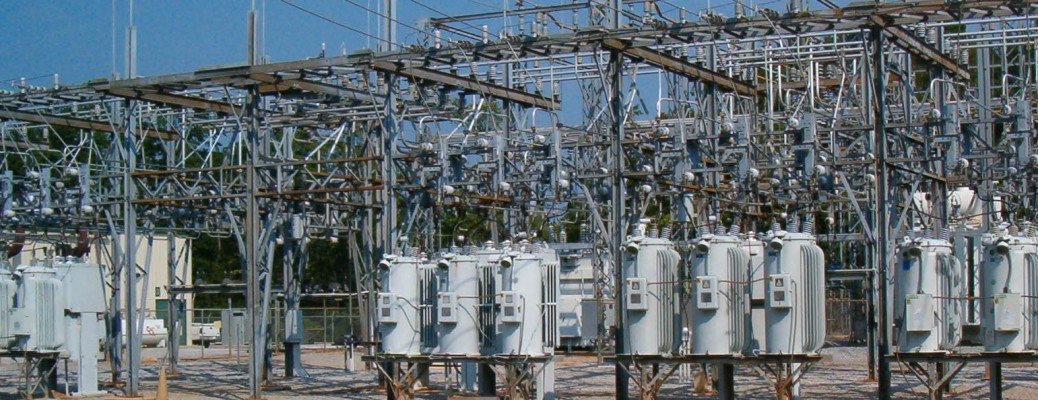Overview
These guidelines are intended to assist users in the installation of Circuit Health Monitoring (CHM) devices. They are intended for use by competent technicians who are trained and experienced with installation of instrumentation in circuit and substation environments. This document is not a substitute for established utility practices, industry norms, or common sense. This document attempts to address questions which often arise during the installation of CHM devices, but it cannot anticipate every possible scenario. If questions arise which are not addressed in this document, contact Carl Benner at the Texas A&M Engineering Experiment Station, 979-845-6224.
CHM Device Hardware
Chassis Types
CHM hardware comes in two chassis packages: a standard 19-inch rack-mount chassis, typically intended for installation in a user-provided 19” rack in a substation, and a “dual-plate” chassis, typically intended for installation in a user-supplied cabinet, such as a breaker cabinet or NEMA-style enclosure. Sensing, power, and communications requirements are identical for the two chassis types.
Input Terminals
Input terminals for sensors, power, and communications differ between chassis types. For the 19” rack-mount chassis, all input terminals are on the rear of the device. On the dual-plate chassis, all terminals are on the “front” of the device, as seen when the device is mounted in a standard breaker cabinet. All input terminals accept standard, #10 ring terminals, are barrier type, and should be tightened to 20 lb-in of torque.
Silk screening identifies each terminal. If the installer has any uncertainty, they should contact Carl Benner, as described above, before proceeding.
Operating Environment
Each CHM device is rated to operate from -20-60°C, non-condensing. To avoid exceeding this temperature limitation, users should employ installation practices that reasonably minimize the temperature of the operating environment of the device, particularly for devices that may be installed in outdoor enclosures with direct exposure to sunlight. Users should avoid installing CHM devices in small, overly crowded NEMA-style enclosures, as this can concentrate the heat generated from the various electronics in the box, including any radios, power converters, batteries, etc., in addition to the CHM device itself. Users also should avoid installing devices at the top of the enclosure, where rising heat results in elevated temperatures.
Sensor Inputs
CT connections
Use standard procedures to connect three, five-amp-nominal current transformers (CTs) to three pairs of terminal screws labeled “Current Input” on the CHM device. For each pair of phase terminals, the input terminal bears a dot and the return does not. Users may consider installing user-supplied test switches in CT and PTs circuits, in accordance with standard utility practice.
Where CTs have multiple ratios, or taps, the CHM device should be connected to the tap having the smallest ratio (i.e., highest output current) that does not cause the CHM input to exceed either 5 ARMS during normal operations or 100 ARMS during bolted faults.
PT Connections
Use standard procedures to connect three, 120-volt-nominal voltage transformers to three pairs of terminal screws labeled “Voltage Input” on the CHM device. Users may consider installing test switches and fuses in PT circuits, in keeping with utility’s standard practices. Bus PTs may be used for voltage transformer inputs, but where multiple devices are installed in a single substation, voltage inputs must be connected to each individual CHM device.
Unit Power
Use standard procedures and materials to connect unit power to the Power terminals on the device. Each device requires 12-48 VDC unit power and consumes less than 25 W. It is important to connect unit power with proper polarity, as indicated by the + and – symbols on the device. Damage may result if improper voltage or polarity is attached. The utility may install a switch and/or fuse in line with unit power, in accordance with standard utility practices.
If the appropriate voltage level is not directly available, a standard DC/DC or AC/DC converter can be used to power the unit from available power sources. Particular attention should be paid to the specifications of any external power converters, because many converters derate their output substantially when operating near the high-end of their rated temperature range.
Do not use a PT that is to be used as a voltage input signal to any CHM device to supply unit power to devices, battery chargers, communications equipment, or anything else. Power converters in such device cause noise and distortion to the voltage waveforms. Where unit power is to be derived from line power, such as for a cabinet-mounted installation, a separate service transformer should be used.
CHM devices need to remain powered and operational during system disturbances, including faults that severely depress or even interrupt substation power. Therefore unit power must derive from a battery-backed source. Examples would include substation batteries, via DC/DC converter, and a battery-backed AC/DC converter. In cabinet installations, some utilities have used a storage battery on the DC side of an AC/DC converter. In other installations, utilities have used an uninterruptible power supply (UPS) on the AC side.
Communications
The utility is responsible for providing an Internet connection to enable each CHM device to communicate with a master station server, which for this project will be at Texas A&M University. A separate document has been prepared to answer a multitude of frequently asked questions regarding communications requirements. Parties interested in acquiring this document should contact Carl Benner at 979-845-6224.
